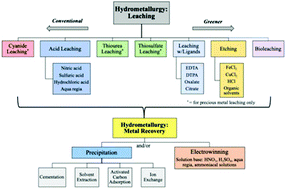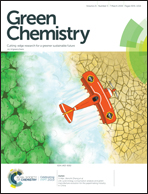Advancements in the treatment and processing of electronic waste with sustainability: a review of metal extraction and recovery technologies
Abstract
The amount of electronic waste (e-waste) globally has doubled in just five years, from approximately 20 million tons to 40 million tons of e-waste generated per year. In 2016, the global amount of e-waste reached an all-time high of 44.7 million tons. E-waste is an invaluable unconventional resource due to its high metal content, as nearly 40% of e-waste is comprised of metals. Unfortunately, the rapid growth of e-waste is alarming due to severe environmental impacts and challenges associated with complex resource recovery that has led to the use of toxic chemicals. Furthermore, there is a very unfortunate ethical issue related to the flow of e-wastes from developed countries to developing countries. At this time, e-waste is often open pit burned and toxic chemicals are used without adequate regulations to recover metals such as copper. The recovered metals are eventually exported back to the developed countries. Thus, the current global circular economy of e-waste is not sustainable in terms of environmental impact as well as creation of ethical dilemmas. Although traditional metallurgical processes can be extended to e-waste treatment technologies, that is not enough. The complexity of e-waste requires the development of a new generation of metallurgical processes that can separate and extract metals from unconventional components such as polymers and a wide range of metals. This review focuses on the science and engineering of both conventional and innovative separation and recovery technologies for e-wastes with special attention being given to the overall sustainability. Physical separation processes, including disassembly, density separation, and magnetic separation, as well as thermal treatment of the polymeric component, such as pyrolysis, are discussed for the separation of metals and non-metals from e-wastes. The subsequent metal recovery processes through pyrometallurgy, hydrometallurgy, and biometallurgy are also discussed in depth. Finally, insights on future research towards sustainable treatment and recovery of e-waste are presented including the use of supercritical CO2.

- This article is part of the themed collections: Precious Elements and 2019 Green Chemistry Hot Articles


 Please wait while we load your content...
Please wait while we load your content...